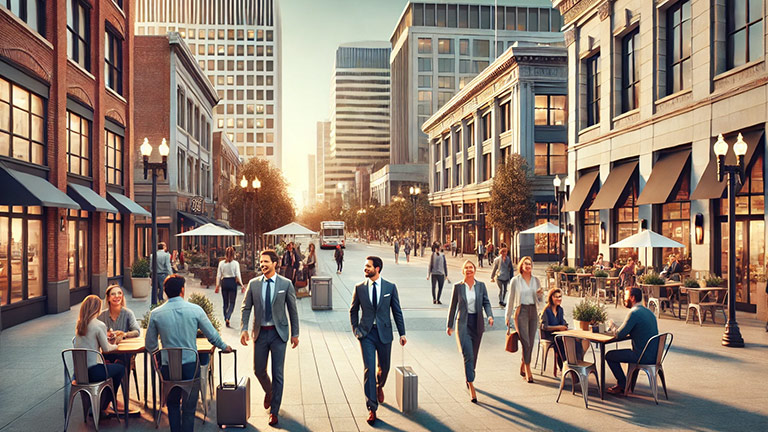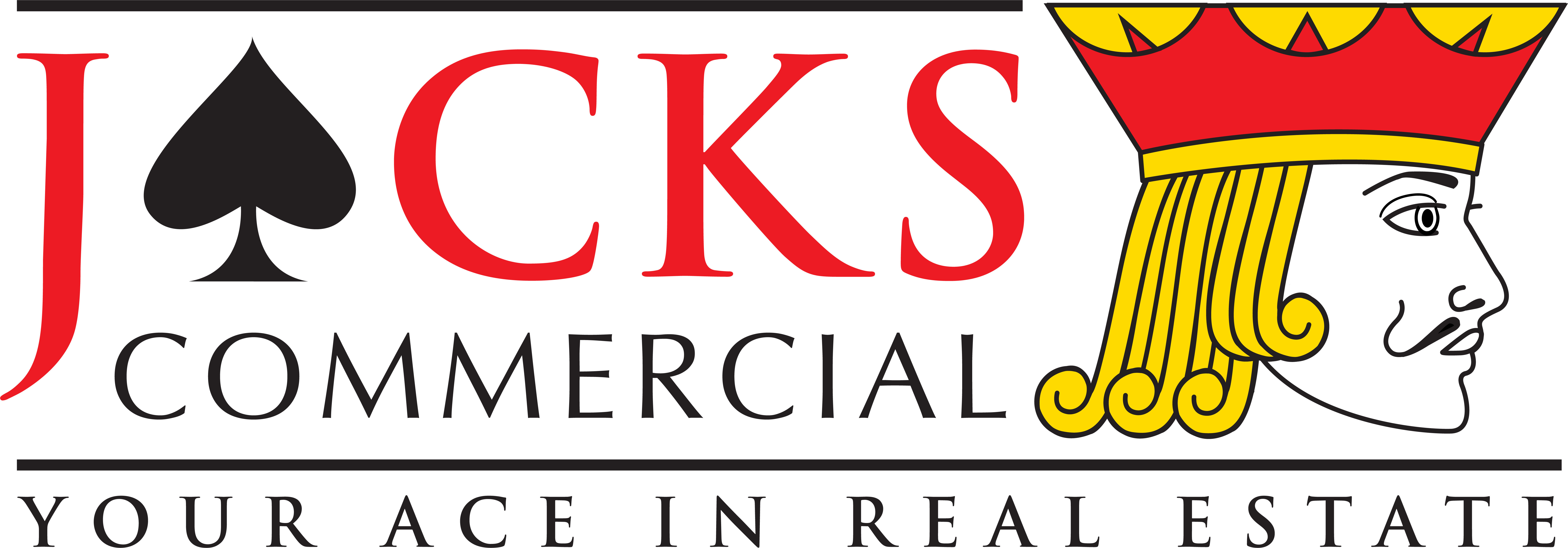
Mixed-use development has emerged as a defining trend in Sacramento's commercial real estate landscape, driven by changing lifestyle preferences, urban planning initiatives, and the economic advantages of combining residential, commercial, and office uses in single projects. For investors and developers, mixed-use properties offer unique opportunities for diversified income streams, enhanced property values, and alignment with Sacramento's long-term growth strategy.
Understanding Sacramento's Mixed-Use Evolution
Sacramento's embrace of mixed-use development represents a significant shift from the suburban sprawl patterns that characterized much of the region's growth in previous decades. This evolution reflects both market demand and municipal policy changes designed to create more sustainable, walkable communities that reduce transportation costs and infrastructure burdens.
The city's General Plan and various specific plans actively encourage mixed-use development through zoning incentives, reduced parking requirements, and streamlined approval processes. This policy support creates favorable conditions for developers while addressing community goals for housing diversity, transportation alternatives, and economic development.
Market Drivers Supporting Mixed-Use Development
Demographic Shifts: Sacramento's growing population of young professionals, empty nesters, and urban-oriented families increasingly seeks lifestyle options that combine living, working, and entertainment in walkable environments. This demographic shift creates market demand that supports mixed-use development economics.
Transit-Oriented Development: Sacramento's expanding light rail system and improved bus rapid transit create opportunities for mixed-use development near transit stations. These locations benefit from reduced parking requirements and access to residents and workers who prefer alternative transportation options.
Economic Efficiency: Mixed-use projects often achieve better land utilization and development economics than single-use projects. Shared parking, common areas, and infrastructure can reduce per-unit development costs while creating synergies between different uses.
Lifestyle Preferences: Modern consumers increasingly value convenience and walkability, preferring locations where they can accomplish multiple activities without driving. Mixed-use developments that provide retail, dining, services, and entertainment within walking distance of residential units command premium rents and sales prices.
Types of Mixed-Use Development in Sacramento
Horizontal Mixed-Use: These projects combine different uses in separate buildings within a single development, often creating campus-like environments with shared amenities and parking. Horizontal mixed-use allows for phased development and can accommodate uses with different operational requirements.
Vertical Mixed-Use: Buildings that stack different uses vertically, typically with retail on the ground floor and residential or office uses above. These projects maximize land utilization in urban areas while creating active street-level environments.
Live-Work Developments: Projects designed specifically for residents who work from home or operate small businesses, combining residential units with flexible commercial spaces. Sacramento's growing entrepreneurial community and remote work trends support demand for these specialized projects.
Mixed-Use Conversions: Adaptive reuse projects that convert existing buildings to mixed-use configurations, often combining historic preservation with modern functionality. Sacramento's diverse building stock provides numerous conversion opportunities.
Investment Advantages of Mixed-Use Properties
Diversified Income Streams: Mixed-use properties provide income from multiple sources, reducing risk compared to single-use properties. When retail markets soften, residential rents may remain stable, and vice versa.
Enhanced Property Values: The convenience and amenities provided by mixed-use developments often support premium pricing for both rental and for-sale residential units. Ground-floor retail benefits from built-in customer bases, while office tenants value the amenities and services available within the development.
Operational Synergies: Different uses can share infrastructure, parking, and common areas, reducing operating costs per square foot compared to separate single-use properties.
Long-Term Value Creation: Mixed-use developments often create lasting value through place-making that enhances entire neighborhoods, benefiting property values beyond the immediate development.
Sacramento's Mixed-Use Opportunity Areas
Downtown Sacramento: The urban core offers numerous opportunities for mixed-use development, from adaptive reuse of historic buildings to new construction on underutilized sites. Downtown's employment base, entertainment venues, and transportation infrastructure support mixed-use development economics.
Midtown and East Sacramento: These established neighborhoods provide infill opportunities for mixed-use projects that complement existing character while adding density and services. Strong residential markets and walkable environments support mixed-use development.
Transit Corridors: Areas along light rail lines and major bus routes benefit from transportation access and reduced parking requirements that improve mixed-use development feasibility.
Suburban Town Centers: Growing suburban communities often lack walkable retail and service options, creating opportunities for mixed-use town centers that serve local populations while providing community gathering spaces.
Development Challenges and Solutions
Financing Complexity: Mixed-use projects often require complex financing structures that address different uses and development phases. Successful developers work with lenders familiar with mixed-use projects and may utilize multiple financing sources for different components.
Design and Construction Coordination: Coordinating different uses with varying requirements for utilities, access, and operations requires experienced design and construction teams familiar with mixed-use complexity.
Regulatory Navigation: Mixed-use projects must comply with regulations for multiple use types, potentially requiring various permits and approvals. Working with experienced consultants helps navigate these requirements efficiently.
Market Timing: Different uses may have varying market cycles and lease-up periods, requiring careful market analysis and financial planning to ensure project success.
Retail Components in Mixed-Use Development
Neighborhood-Serving Retail: Mixed-use developments work best when retail components serve both development residents and surrounding neighborhoods. Grocery stores, pharmacies, restaurants, and personal services create sustainable retail environments.
Experience-Based Retail: Restaurants, fitness centers, and entertainment venues that provide experiences rather than just products tend to perform well in mixed-use environments.
Flexible Retail Spaces: Designing retail spaces that can accommodate various tenant types and sizes provides leasing flexibility and helps maintain occupancy as retail markets evolve.
Pop-Up and Temporary Uses: Incorporating spaces that can accommodate temporary or seasonal uses helps maintain activation while providing opportunities for emerging businesses.
Residential Components and Market Positioning
Unit Mix Strategy: Successful mixed-use developments typically include diverse unit types to serve various demographic groups, from studios for young professionals to larger units for families.
Amenity Programming: Shared amenities like fitness centers, co-working spaces, and outdoor areas add value while creating community within developments.
Parking Strategy: Balancing parking needs for residents, retail customers, and office workers requires careful planning and may include shared parking arrangements and alternative transportation incentives.
Property Management: Mixed-use properties require specialized management expertise that understands both residential and commercial operations.
Office and Workspace Integration
Flexible Office Spaces: Including co-working spaces, flexible offices, and small business suites can serve both development residents and local entrepreneurs.
Live-Work Integration: Designing units that accommodate home-based businesses or provide flexible workspace appeals to Sacramento's growing freelance and entrepreneurial workforce.
Business Services: Including business services like copying, shipping, and meeting rooms can support both residents and local small businesses.
Technology Infrastructure: Robust internet and technology infrastructure throughout mixed-use developments supports modern work patterns and adds value for all users.
Financial Analysis and Pro Forma Development
Mixed-use development requires sophisticated financial analysis that considers multiple revenue streams, varied construction costs, and different lease-up periods.
Revenue Optimization: Successful projects balance different uses to optimize overall returns while ensuring each component contributes to project success.
Cost Management: Shared infrastructure and construction coordination can reduce costs, but require careful planning and experienced development teams.
Phasing Strategies: Some mixed-use projects benefit from phased development that allows earlier phases to generate income while later phases complete construction.
Exit Strategies: Mixed-use properties may appeal to different types of buyers or may be sold separately by use type, requiring flexible exit strategy planning.
Future Trends and Opportunities
Sacramento's mixed-use development market continues evolving with changing demographics, technology, and lifestyle preferences.
Health and Wellness Integration: Future mixed-use developments may increasingly incorporate health and wellness amenities, from fitness facilities to healthcare services.
Technology Integration: Smart building systems, high-speed internet, and technology-enabled services will become standard expectations in mixed-use developments.
Sustainability Focus: Green building practices, renewable energy, and sustainable transportation options will increasingly influence mixed-use development design and marketing.
Flexibility and Adaptability: Future mixed-use developments will likely emphasize flexibility to adapt to changing market conditions and user needs over time.
